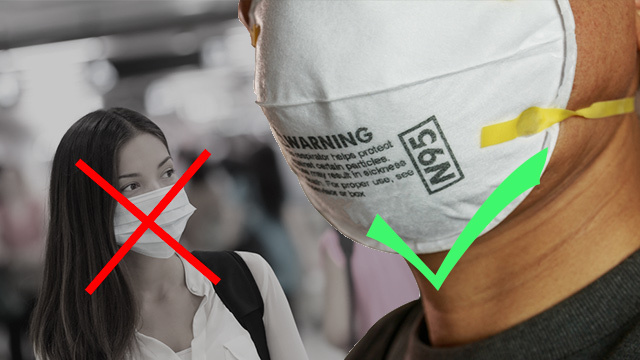Top 10 Coronavirus Myths (COVID-19)
Article At A Glance
- The 2019 Novel Coronavirus has recently been given the name COVID-19.
- 10 of the most common Coronavirus myths surrounding COVID-19 (including the Coronavirus conspiracy theory).
- We will also be covering a few ways to spot fake news.
Social media is an amazing tool to share about our lives, but it is also a place where rumors and misconceptions spread like wildfire. Many of the latest social media myths are about the 2019 Novel Coronavirus, newly named COVID-19. It is important to clear up these misconceptions, because they can cause unnecessary panic or complete disregard for this serious situation.
Myths
- We don’t need to worry about coronavirus, because it has been around for a long time. FALSE. Many people believe that because many disinfecting products claim to kill a coronavirus it means this virus isn’t new. The truth is coronavirus is the name for an entire family of viruses. SARS is just one example of a coronavirus that you have probably heard of before(1). The 2019 Novel Coronavirus is, in fact, a new strain, and we still have a lot to learn about it.
- There was a patent and a vaccine for the virus before the Coronavirus (COVID-19) was even around, so it must be part of a global population control conspiracy. FALSE. Currently, as of March 9, 2020 there is a recently developed vaccine (2) that is undergoing testing at the National Institute of Allergy and Infectious Diseases (NIAID). Clinical trials will take at least 14 months to prove safety and effectiveness. This coronavirus myth was started because someone found out that a patent for a coronavirus expired, but it was actually for SARS, not the virus that is currently making headlines (3).
- Receiving packages from China is dangerous. You should wait 3 days before opening anything from China. False. Viruses need a host in order to live. Without a host, viruses cannot survive for long. Your packages from China are not going to give you any virus, alone COVID-19 (4)

-
You can get coronavirus from your pets. FALSE. It is true that previous coronaviruses outbreaks have been linked to specific animals, but there is no evidence to suggest that traditional pets, like cats and dogs, can be infected and spread the 2019 Novel Coronavirus (5).

-
You can treat coronavirus with antibiotics. False. Antibiotics cannot be used to prevent or treat a virus (6).
-
Everyone should wear surgical masks. False. Since the risk of contracting the coronavirus is currently so low in the United States, the CDC does not recommend masks for the general public (7). If someone feels the need to wear a mask for protection, it is important to note that a regular surgical mask will not give them the desired protection (8). A fitted and more specialized mask, like the n95 respirator, would be needed for proper protection from COVID-19.

-
Drinking bleach will protect you from getting the 2019 Novel Coronavirus. FALSE. Bleach can kill the virus on surfaces, but it will not have the same effect in your body (9). Bleach should never be ingested.
-
The 2019 Novel Coronavirus is predicted to kill 65 million people. FALSE. Last October, the John Hopkins Center for Health Security and partners hosted a tabletop exercise called Event 201. This exercise was to highlight the preparedness and challenges that could arise during a severe pandemic. The event was hypothetical and not a prediction of any future events (10).
-
The 2019 Novel Coronavirus is less deadly than SARS, another coronavirus. TRUE. If you are discussing the percentage of people who have died from contracting these viruses, then it is true that SARS is “more deadly”. SARS had a 10% fatality rate, and current estimates on the 2019-nCoV give it a 2% fatality rate(11). The issue with the 2019 Coronavirus is that it appears to spread more easily. During the 2002-2003 SARS outbreak, there were 8,437 SARS cases reported and 813 deaths. As of February 24th, there have been more than 79,000 cases of COVID-19 worldwide, and more than 2,500 deaths (12).
- The incubation period for COVID-19 could be up to 24 days. TRUE. Incubation period has been a big discussion on social media this week. 14, 24, and 40 days have all been thrown out as potential incubation periods, but there is no basis for the 40 day incubation rumor. According to one of the first studies released on the 2019 Novel Coronavirus, the incubation period could be up to 24 days (13). The median incubation period in the study was only 3 days though.
How To Spot Fake News
Knowing how to spot fake news is an important skill everyone should have, especially in times full of confusion like we are experiencing now with the 2019 Novel Coronavirus. When dissecting any new information, there are a few things to consider before accepting it as truth.
- Consider the source. It is a huge red flag if there isn’t a source listed to back a claim. Here are a few things to consider when a source is listed:
- Do you recognize the name of the source of the information?
- Is this link to the source’s real website?
- Has the source been reliable in the past?
You can learn more about COVID-19 here.
References
- https://www.cdc.gov/coronavirus/types.html
- https://www.livescience.com/us-coronavirus-vaccine-trial-recruiting.html
- https://www.businessinsider.com/wuhan-coronavirus-vaccine-could-take-years-timeline-and-cost-2020-2
- https://www.npr.org/sections/health-shots/2020/02/03/801620037/no-you-wont-catch-the-new-coronavirus-via-packages-or-mail-from-china
- https://www.who.int/emergencies/diseases/novel-coronavirus-2019/advice-for-public/myth-busters
- https://www.healthline.com/health-news/3-myths-about-the-coronavirus-to-know#Myth-#3:-Antibiotics-can-prevent-or-treat-the-new-coronavirus
- https://www.cdc.gov/coronavirus/2019-ncov/communication/videos.html
- https://www.hopkinsmedicine.org/health/conditions-and-diseases/coronavirus/2019-novel-coronavirus-myth-versus-fact
- http://www.centerforhealthsecurity.org/newsroom/center-news/2020-01-24-Statement-of-Clarification-Event201.html
- http://www.centerforhealthsecurity.org/newsroom/center-news/2020-01-24-Statement-of-Clarification-Event201.html
- http://www.centerforhealthsecurity.org/resources/fact-sheets/pdfs/coronaviruses.pdf
- https://www.who.int/docs/default-source/coronaviruse/situation-reports/20200224-sitrep-35-covid-19.pdf?sfvrsn=1ac4218d_2
- https://www.medrxiv.org/content/10.1101/2020.02.06.20020974v1
